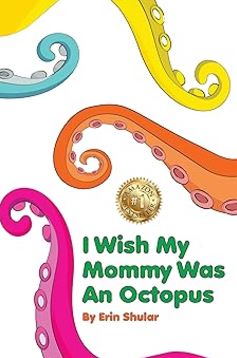Writing for young readers is an art that requires a deep understanding of how children think, learn, and engage with stories. The best children’s books don’t just entertain—they teach valuable life lessons in a way that feels effortless and fun. But how do authors convey big ideas using simple words? The key lies in clarity, relatability, and emotional depth.
Why Simplicity Matters in Children’s Literature
Young readers are still developing their vocabulary, comprehension skills, and ability to grasp complex ideas. Using simple, accessible language allows them to fully engage with a story without feeling overwhelmed. The best children’s books avoid long, complicated sentences or abstract concepts that might confuse their audience. Instead, they use clear, direct language that makes learning enjoyable.
However, simplicity doesn’t mean talking down to children. Young readers are incredibly perceptive and can sense when a story respects their intelligence. The goal is to communicate big lessons in a way that feels natural and engaging, rather than forced or overly didactic.
Big Lessons in Simple Words
Children’s books often tackle universal themes like kindness, empathy, perseverance, and self-acceptance. These are big ideas, but they can be broken down into relatable, bite-sized lessons that kids can understand and apply in their own lives.
Here’s how some of the best children’s books teach important lessons with simple words:
- Kindness (Have You Filled a Bucket Today? by Carol McCloud) – Using the metaphor of a bucket, this book teaches children that kind actions fill both their own and others’ buckets, making the world a better place.
- Empathy (The Rabbit Listened by Cori Doerrfeld) – With minimal text and expressive illustrations, this story shows how listening is sometimes the best way to comfort others.
- Resilience (The Little Engine That Could by Watty Piper) – A simple yet powerful lesson in perseverance, teaching kids the importance of a positive mindset.
- Self-Acceptance (Giraffes Can’t Dance by Giles Andreae) – A playful yet meaningful reminder that everyone has their own unique strengths.
These books don’t rely on complex explanations or lengthy descriptions, they use simple, engaging language that allows kids to absorb life lessons naturally.
Tips for Writing Meaningful Stories for Young Readers
If you’re writing for children, here are a few key strategies to make your story both simple and impactful:
- Use Familiar Language – Stick to words and phrases that young readers already know or can easily pick up.
- Show, Don’t Tell – Use actions and dialogue to demonstrate a lesson rather than spelling it out explicitly.
- Create Relatable Characters – Children connect with characters who experience emotions and challenges similar to their own.
- Keep Sentences Short and Engaging – Simple, rhythmic, and playful sentences make reading fun.
- Let the Illustrations Do Some Work – In picture books, illustrations play a huge role in storytelling, allowing for fewer words while still conveying big ideas.

Conclusion
Writing for young readers is about teaching big lessons with small words. The most memorable children’s books leave a lasting impression, not through complexity, but through simplicity and heart. By using clear language, engaging stories, and relatable characters, writers can shape the way young minds see the world, one simple word at a time.
If you want to explore how impactful simple storytelling can be, read I Wish My Mommy Was an Octopus by Erin Shular. Through its relatable narrative, the book subtly teaches the importance of love, understanding, and cherishing family moments. With its delightful language and touching message, it’s a perfect read for young minds.
Grab your copy now!




